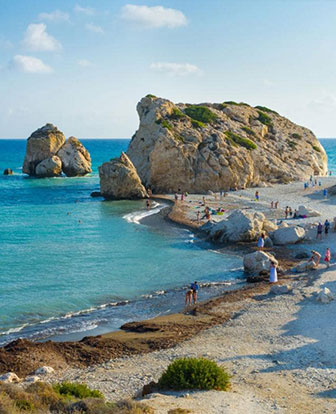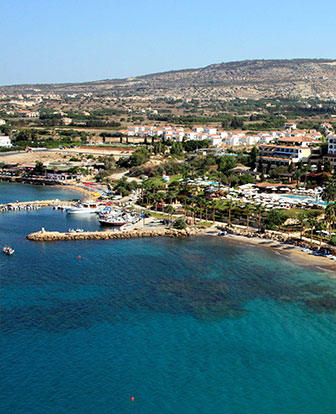



















Intl. Symp. on Physical Chemistry and its applications for sustainable development

Bio | CV | Publications
This major symposium is in honor of the distinguished work and lifetime achievements of Prof. Constantinos Vayenas. Professor Vayenas is a well-known figure in Heterogeneous Catalysis and Electrochemistry, credited with the discovery and detailed study of the Phenomenon of Electrochemical Promotion of Catalysis (EPOC), also known as Non Faradaic Electrochemical Modification of Catalytic Activity (NEMCA effect).
Professor Vayenas was born in Athens in 1950 and studied Chemical Engineering at the National Technical University of Athens (NTU, 1968-1973). He received his PhD from the University of Rochester in NY, USA in 1976 and then taught as Assistant Professor at Yale University (1976-77) and as Assistant and Associate Professor at the Massachusetts Institute of Technology (ΜΙΤ, 1977-82). Since 1982 he is Professor of Chemical Engineering at the University of Patras. He has also been Visiting Professor at Yale, EPFL (Lausanne) and the University of Lyon. His research focuses in the areas of Catalysis, Electrochemistry and mathematical modeling of physicochemical and physical phenomena. He has coauthored some 270 refereed publications in International Journals, four of them in the Journals Science and Nature. According to the Web of Science he has received a total of 8661 citations and his h-index is 52.
He has received several international Awards which include the Outstanding Achievement Award of the High Temperature Materials Division of the Electrochemical Society (ECS) in 1996, the Wason Medal for Materials Research of the American Concrete Institute in 1992, the Chemistry Award of the Academy of Athens in 1992, and the Outstanding Faculty Award of the Chemical Engineering Department at MIT in 1979 and 1981.
In 2005 he was elected Fellow of the International Society of Electrochemistry (ISE), being chronologically the 14th scientist to receive this honour. He has supervised 38 PhD Theses and 18 of these PhD students have become Professors in Greek but also non-Greek (USA, China) Universities and Research Centers. In 2010 he was elected as one of the 45 full members of the Academy of Athens and in 2015 he received an Honorary PhD degree from the Aristotle University of Thessaloniki. In 2017 he was the first Greek scientist to be elected as Foreign member of the National Academy of Engineering (NAE) of the USA.
Together with his coworkers at MIT and at the University of Patras he has discovered the phenomenon of the Non-Faradaic Electrochemical Modification of Catalytic Activity (NEMCA effect) which is also known in the literature as the phenomenon of the Electrochemical Promotion of Catalysis (EPOC).
This phenomenon allows for the operando reversible enhancement and control of the rate and selectivity of catalytic reactions on electronically conductive catalysts supported on ionic or mixed ionic electronic conducting supports via application of small (2 V) potentials between the catalyst and a counter electrode. In this way promoting or poisoning species are forced to migrate in situ from the support to the catalyst surface and alter its electronic properties, such as the work function, and thus also its catalytic properties. The observed catalytic rate enhancement can exceed the Faradaic rate of promoter supply by up to five orders of magnitude. The study of this phenomenon has shed new light on the mechanism of metal-support interactions (MSI) and has allowed for the systematic study of the role of promoters in heterogeneous catalysis, leading to simple rules for promoter selection on the basis of the unpromoted catalytic kinetics.
He is also well known for his work in the area of high and low temperature Fuel Cells, where has introduced the first monolithic cross-flow fuel cells (together with L. Hegedus) and the first triode-fuel cells. He is also known for his fundamental investigations, using isotopes, of the mechanism of proton transport in Nafion membranes.
His research, in collaboration with Professor Fardis, of the carbonation of reinforced concrete is also very well known and widely cited and has led to simple analytic mathematical expressions for the prediction of the carbonation depth and the useful lifetime of the reinforced concrete. This research has led to the Wason Medal of the American Concrete Institute (ACI).
More recently he has investigated the Thermodynamics and Catalysis of proton, neutron and other hadron formation via the development of Bohr type models which use the strong gravitational interactions between ultrarelativistic neutrinos as the attractive centripetal force. This work, known as Rotating Lepton Model (RLM) has led to simple analytical expressions for the masses of hadrons and bosons which agree within 1% with the experimental values, thus strongly supporting the idea that the Strong Force is Relativistic Gravity.
This introduction is only a brief overview of the extremely large breadth of Vayenas's innovative research, and only those with the largest impact in the scientific communities are presented.
Reflecting on his outstanding academic activity, this international symposium will feature plenary, keynote and invited lectures with topics including but not limited to Heterogeneous Catalysis, with emphasis in promotion and metal support interactions, Classical and Electrochemical Promotion of Catalysis, Electrochemistry, Fuel Cells, kinetics and modeling of concrete carbonation, Modeling of the Thermodynamics and Catalysis of chemical synthesis and of the synthesis of hadrons from elementary constituent particles.
ROUND TABLE DISCUSSIONS
A round table discussion open to everyone interested will be organized at a specific date and time during the symposium. It will be a platform for high level representatives of various industries, technologies, and academic disciplines to freely discuss and debate all topics of this symposium, and identify positive and efficient pathways towards sustainability in industrial practices, technologies, and research.
You are cordially invited to actively participate in this symposium by submitting and presenting a paper, or by attending the round table. We look forward to meeting you at the Cyprus, October 2019.
















